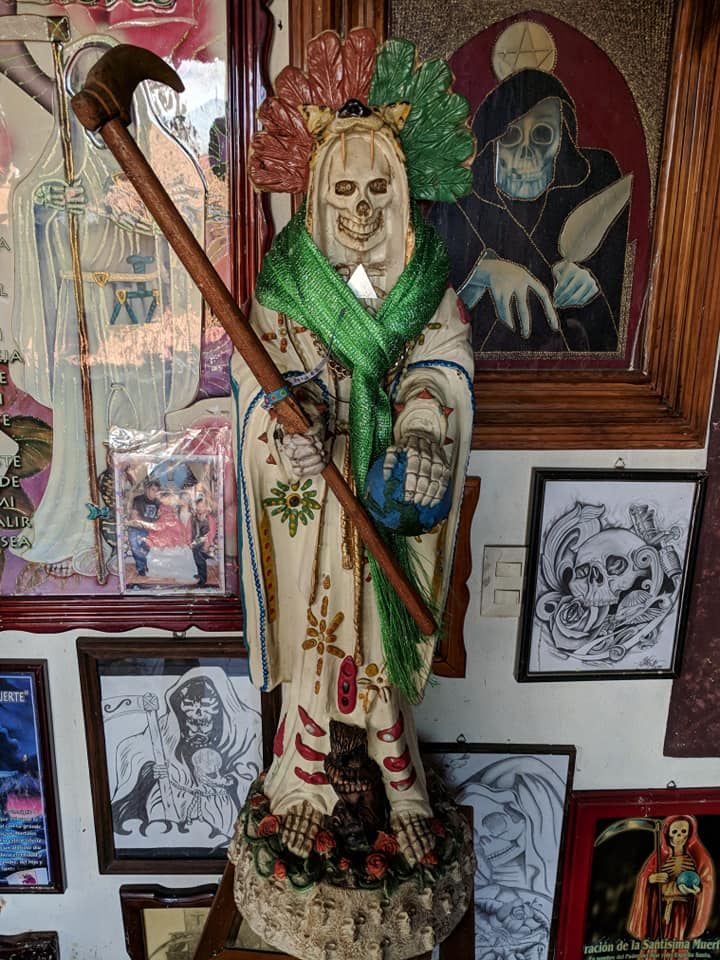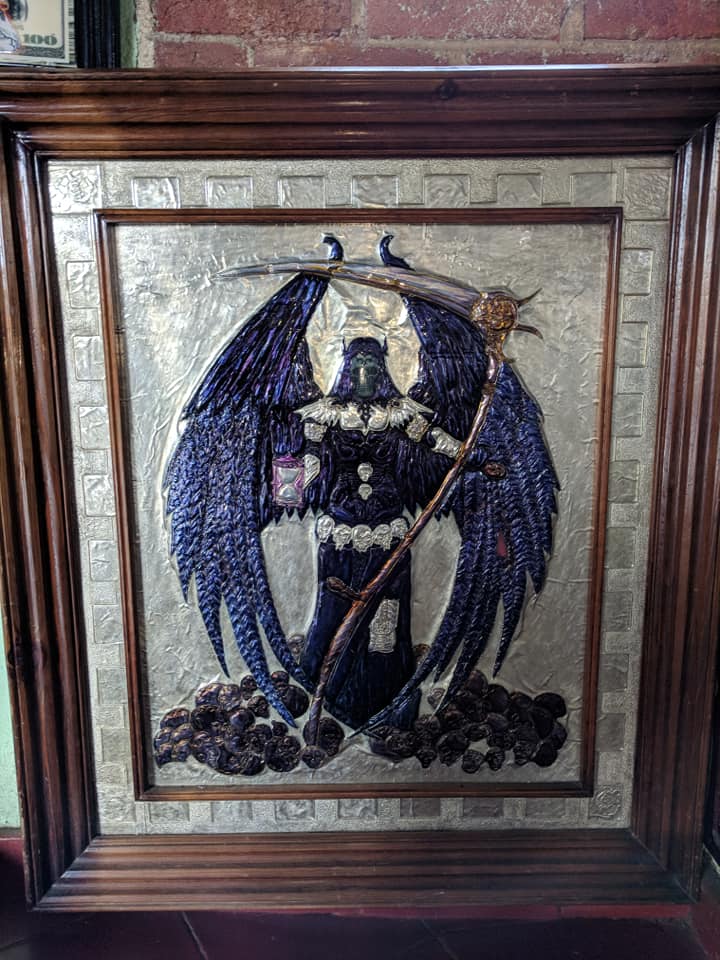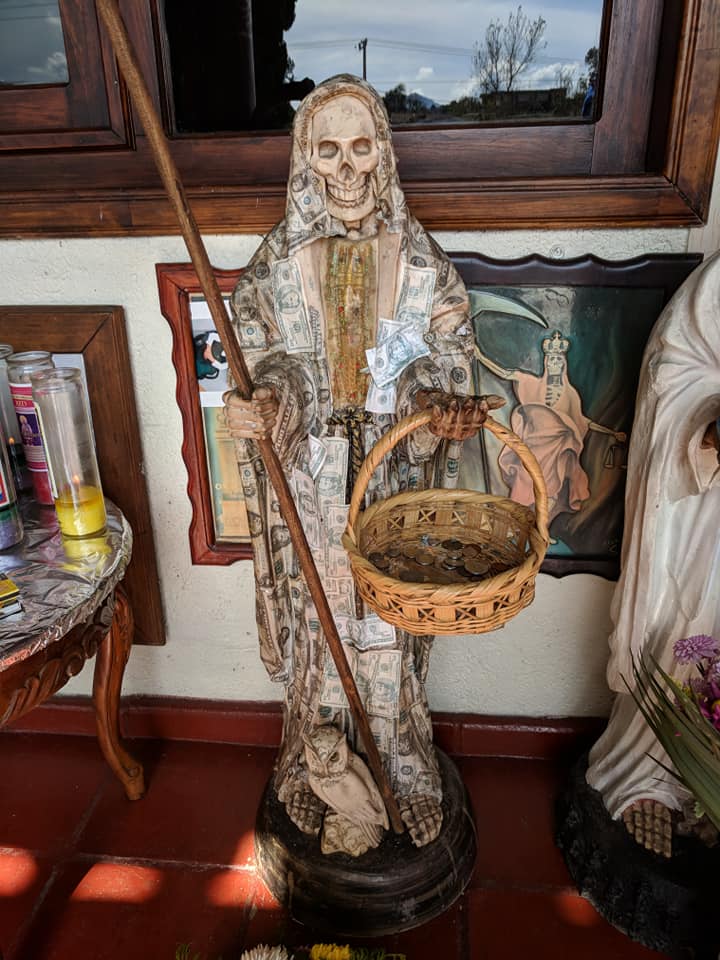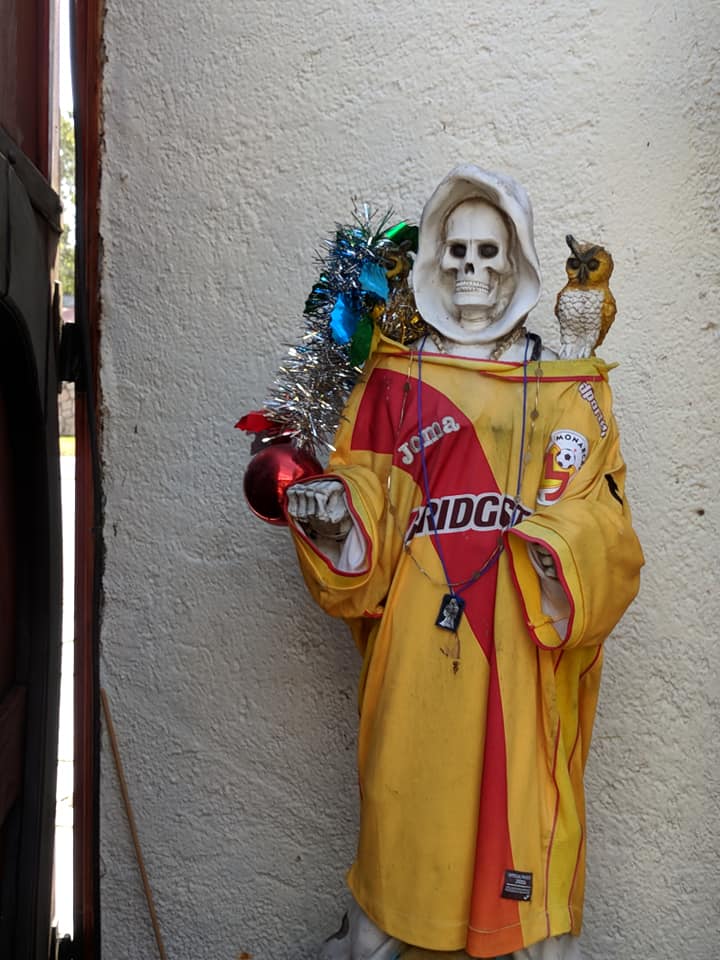
La Casa de la Santa Muerte in the tiny Michoacan town of Santa Ana Chapitiro, just a 15-minute drive from Day of the Dead Mecca, Patzcuaro, is one of the most elaborate shrines to the Skeleton Saint in Mexico. Since I have family in Michoacan, the colorful temple was one of my first research sites in the summer of 2009 when I was just commencing my decade-long research on what is now the fastest growing new religious movement not only in Mexico but also on the entire planet. Having visited scores of shrines in Mexico and the U.S. since my initial appearance at Casa de la Santa Muerte, I am still struck by its uniqueness.
Hundreds of singular images, many of them lovingly handcrafted by devotees, of the Bony Lady make for a shrine that has been customized like few others. Indeed the signature likeness, which graces the cover of the second edition of my book, “Devoted to Death,” is a rather androgynous depiction of the saint of death, who in Mexico is almost uniformly represented as female.
However, what’s most unique at the Michoacan temple is the representation of Holy Death as a Purepecha Indigenous figure. Based in the nearby town of Tzintzuntzan, the Purepecha (aka Tarascans) were an impressive MesoAmerican civilization that ruled the present day state of Michoacan and part of Jalisco. Most Michoacanos are very proud of their Purepecha heritage and are quick to point out that the neighboring mighty Aztec empire was never able to subdue them.
Over the past ten years or so one of the major new trends in Santa Muerte devotion, especially among Mexicans and Mexican-Americans, is to view the Powerful Lady (Dama Poderosa), one of her myriad monikers, as the most recent manifestation of Aztec goddess Mictecacihuatl, who reigns over the underworld, Mictlan, along with her husband, Mictlantecutli.
Exaltation of the Aztec and Mayan past coupled with rejection of Spanish colonialism is a salient aspect of contemporary Mexican nationalism, so the saint of death is more appealing as Mictecacihuatl than as La Parca, the Spanish Grim Reapress, regardless of the historical evidence or lack thereof of any direct connection to the Aztec death goddess.
So while the White Girl (la Niña Bonita, another popular nickname) is also depicted as Mictecacihuatl at La Casa de la Santa Muerte (as evidenced in several photos below), she’s most impressive as an amalgam of two Purepecha goddesses. Like Hindu goddess Kali, the Purepecha deity Cuerauaperi presides over both birth and death, the latter especially in relation to experiencing a violent end, which has been all too frequent in Michoacan as an epicenter of the Mexican drug war.
The other goddess, Xaratanga, is associated with the moon and watches over humans and animals and is propitiated for matters of love, sex, and pulque (the fermented alcoholic drink made from the heart of the Maguey plant). Santa Muerte’s role as Love Doctor is so important, both historically and today, that I devote an entire chapter to it in my book. Offerings of pulque to Santa Muerte are rare today, but its distilled relatives, tequila and mezcal, figure among the Skeleton Saint’s most popular tipples.
Below are my photographs, shot at La Casa de la Santa Muerte with a smart phone in late December, 2018.



































Every piece in the shrine crafted with love and devotion by devotees….Its a family I am happy and proud to be a part of!
LikeLike